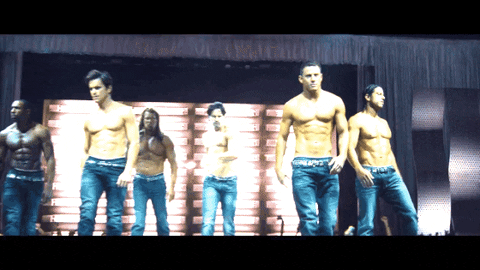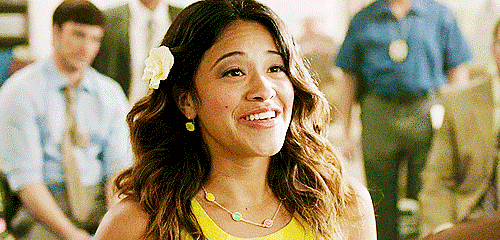Wokewashing: 8 Tests that Expose Lazy Attempts at Diversity
Your favorite character could be a cliché...or merely a token
You’ve probably heard the terms diversity, equity, and inclusion (DEI). Our contemporary media landscape loves these buzzwords. Yet as studios struggle to include characters from a wider range of backgrounds, you have to wonder if they care about diverse representation at all.
Let’s be honest. Like most capitalistic companies, they only care if it makes them money. So yeah, they’ll appear to release some inclusive representations of us only if it’s profitable. But even then, it won’t necessarily be done well.
The term "wokewashing" describes the phenomenon of companies or creators exploiting social justice issues for profit or public relations, without truly committing to meaningful change. Kind of how companies love to pull out their rainbow flags in June, without doing anything to actively reduce the harm that LGBTA+ employees might routinely encounter in their jobs at those companies.
Black History Month just passed. And conservatives used it as the catalyst for stripping education of this history. In Florida, CNN reports that despite Governor DeSantis’ statement “the state of Florida education standards not only don’t prevent, but they require teaching Black history,” that isn’t actually the case. It’s only the history it deems appropriate, like how Texas high school textbooks referred to slaves as “indentured servants.”
"We proudly require the teaching of African American history. We do not accept woke indoctrination masquerading as education," tweeted Florida Commissioner of Education Manny Diaz Jr.
With a name like “Manny Diaz, Jr.” he might be playing the role of the whitewashed token. Because it sure sounds like Mr. Diaz Jr. will do or say anything to be included in proximity to whiteness and therefore power. Including selling out other minorities like himself.
In last week’s episode on media bias, Professor Evelyn Alsultany explained that she tracks the “parameters of inclusion” in the United States, particularly for Muslims and Arabs in a post-9/11 world.
As a childfree Latina, she’s also keenly aware of the parallel inclusion parameters that exist for other minority groups, such as Latines and childfree people. Because so many damaging stereotypes are perpetuated by the media, it’s not surprising that we may have ideas about groups we don’t belong in that aren’t even true.
It’s all part of our cultural brainwashing that we’re trying to dismantle here.
This post may contain affiliate links. For more information, please see my Disclosure Policy.
In her book Broken: The Failed Promise of Muslim Inclusion, Evelyn lists 6 tests (including one of her own!) that can be applied to popular media to help spot the difference between meaningful representation and lazy tokenism. As a casual consumer of all sorts of media, are we being fed genuine efforts at creating diverse narratives or a veneer of inclusivity to mask a lack of genuine diversity?
Let’s find out!
Warning: passing or failing tests doesn’t necessarily equate with good or bad media. These tests are simply a framework through which inclusivity initiatives can be viewed. You might be surprised that some of your favorite movies and shows fail on one but pass through another.
Bechdel-Wallace Test
The most infamous of these tests is commonly referred to as the Bechdel test. It’s named after cartoonist Alison Bechdel who created the comic strip Dykes to Watch Out For. One particular cartoon in 1985 titled "The Rule," showed two women talking about going to the movies, when one says she’ll only watch if it satisfies three requirements:
It has at least two women in it;
who must talk to each other; and
the conversation is about something OTHER than a man
According to Wikipedia, Bechdel credits the idea for the test to her friend and sparring partner, Liz Wallace, hence the hyphenated name.
Examples of media that pass or fail the Bechdel-Wallace test:
Pass: Bridesmaids (2011) - The film features a strong ensemble cast of female characters with rich friendships and independent storylines.
Pass: Mad Max: Fury Road (2015) - The film passes the test as it features multiple female characters who have conversations with each other that are not about men.
Fail: The Wolf of Wall Street (2013) - This movie focuses almost entirely on male characters and relegates women to stereotypical roles.
Fail: Nope (2022) - Even with three named female characters, they never speak to one another.
DuVernay Test
This test was coined by New York Times film critic Manohla Dargis in 2016. She wanted to do the same for people of color as the Bechdel-Wallace test does for women. She named it after film director Ava DuVernay, also an outspoken critic Hollywood’s lack of diversity.
The idea of “belonging,” which is what Professor Alsultany’s book is also about, is something DuVernay actively seeks:
"There’s a belonging problem in Hollywood. Who dictates who belongs? The very body who dictates that looks all one way."
The criteria to pass requires that African Americans and other minorities have fully realized lives rather than serve as background players scenery in white stories.
Pass: Black Panther (2018) centers on a thriving African nation with a rich culture and complex characters of color.
Pass: Selma (2014) directed by Ava DuVernay, is about the 1965 is about the marches from Selma to Montgomery by key activists in the fight for Black voting rights.
Fail: The Help (2011), the story of Black domestic workers is told entirely from the perspective of a white woman.
Fail: Friends (1994-2004) while it included 27 black actors over 10 years, non-white characters were either too minor or only served to move the white-centric plots forward. Also what SlashFilm called “an all-white rip-off of the Fox show Living Single.
Vito Russo Test
Created by film historian and GLAAD co-founder Vito Russo to view how LGBTQ+ characters are drawn. To pass, a film/show:
Must contain a character that is identifiably lesbian, gay, bisexual, and/or transgender
The character must not be solely or predominantly defined by their sexual orientation or gender identity.
The LGBTQ character must be tied into the plot in such a way that their removal would have a significant effect. The character should “matter.”
Pass: Love, Simon (2018) - The film features a gay protagonist whose storyline isn't solely focused on his sexuality but rather his coming-of-age journey and relationships.
Pass: Sense8 (2015) - the Netflix show features a diverse cast of LGBTQ+ characters with their own stories, desires, and flaws.
Fail: Brokeback Mountain (2005) - While it's a groundbreaking film for LGBTQ+ representation, the characters' identities are largely defined by their sexual orientation.
Fail: Anchor Man 2 (2013) and Identity Thief (2013) - Both movies used anit-gay and anti-trans slurs as punchlines.
Alia Test
Sadly this seems like the easiest test to pass, but it’s mere existence should tell us something about what stories mainstream Hollywood wants to tell about Indigenous people.
Created by Ali Nahdee, an Anishinaabe writer, for representation of Indigenous women. There are only three criteria to pass:
Is she an Indigenous/Aboriginal woman who is a main character;
who does not fall in love with a white man;
and does not end up raped or murdered at any point in the story?
Ali Nahdee wrote a page dedicated to movies that pass the Alia test, with many titles such Whale Rider (2004), Smoke Signals (1998), and Disney’s Moana (2016). It includes a title that also passes the Bechdel-Wallace test: Mad Max: Fury Road (2015).
One glaring omission: Disney’s Pocahontas (1995) for not only sexualizing a young woman, her well-known “marriage” to a colonizer, but also perpetuating stereotypes and removing historical context. At least they did better 20 years later with Moana, but Pocahontas is still available for streaming.
Riz Test
Inspired in 2017 by a speech given by actor Riz Ahmed to the British House of Commons, this test has five criteria to measure how Muslims are portrayed in media.
If the film/show stars at least one character who is identifiably Muslim (by ethnicity, language or clothing) - is the character…
Talking about, the victim of, or the perpetrator of terrorism?
Presented as irrationally angry?
Presented as superstitious, culturally backwards or anti-modern?
Presented as a threat to a Western way of life?
If the character is male, is he presented as misogynistic? or if female, is she presented as oppressed by her male counterparts?
If the answer for any of the above is yes, then the media production is an automatic fail.
Letterboxd provides another list of movies that pass the Riz test, though most are from the past decade. Notable exceptions include Israeli film Beyond the Walls (1984), British film The History Boys (2006), and American movie Office Space (1999)—which ironically doesn’t pass the Bechdel-Wallace test.
Obeidi-Alsultany Test
Expanding on the Riz test, the Obeidi-Alsultany Test—co-authored by guest Professor Evelyn Alsultany and Sue Obeidi, the director of the Muslim Public Affairs Council’s (MPAC) Hollywood Bureau—has five additional guidelines for Muslim and Arab representation:
The project that includes a Muslim character(s) does not reproduce or reinvent old tropes but rather explores new stories and contexts.
The project that includes Muslim character(s) has a Muslim-identifying writer on staff to ensure that Muslim cultures, religion, characters and storylines are being portrayed accurately and authentically.
The Muslim character(s) is not solely defined by their religion. Religion can be part of the character’s backstory but should not be their entire story. Muslim culture and faith should be accurately delineated.
The Muslim character(s) has a strong presence and the character(s) is essential to the story arc and has a rich and clearly defined backstory.
The Muslim character(s) is portrayed with diverse backgrounds and identities.
An op-ed in The Hollywood Reporter by the originators of the test included these shows that passed or failed:
Even before Muslim-produced Ramy, and Hala (Apple TV+), CBS, in FBI, introduced us to the first Muslim leading man, played by Muslim actor Zeeko Zaki, and The CW’s Legends of Tomorrow features a Muslim computer hacker superhero. The Red Line (CBS) included a queer Indian Muslim recurring character in the series. CBS hired Fawzia Mirza, who identifies as Muslim, queer and South Asian, to write one of the episodes.
Productions that fail the test include:
911: Lone Star (2020): a Muslim character prayed incorrectly, which could’ve been avoided with a simple Google search
Netflix’s Messiah (2020): “Muslim characters are reduced to their politics and religion, and culture and faith are often conflated.”
More Media Tests
Even though these were the 6 tests included in Professor Alsultany’s book, there are a myriad of others. You can find a few more outlined in the archive of The Unedit and a score card for even more (including some that focus on equality behind the camera) on FiveThirtyEight. Two that my eyes were drawn to immediately were:
The Villalobos Test
The Villalobos Test was created by Ligiah Villalobos, a Mexican immigrant and writer/producer, probably best known for her film Under the Same Moon (2007). She created this test to highlight Latina representation.
The four criteria to pass the Villalobos Test are:
There must be a Latina lead, and subsequently the lead (or another Latina character)
must be shown as professional or college educated,
speaking unaccented English, and
must not be sexualised (as a key character trait).
Modern Family (2009-2020) fails on at least three points. Jane the Virgin (2014-2019) and now Not Dead Yet (2023-), both starring Gina Rodriguez, both pass. If Wednesday Addams is followed into and past college, maybe Netflix’s Wednesday1 (2022-) will pass this test, too.
The Villarreal Test
Created by Lindsey Villarreal to go beyond the exceedingly low bar of the Bechdel-Wallace test.
A film straight up fails if the lead female character is introduced in one of 3 stereotypical ways:
sexualized: From Dusk to Dawn (1996)
as hardened, expressionless or soulless: The Devil Wears Prada (2006)
or as a matriarch/tired, older or overworked: Everything Everywhere All At Once (2022)
But with this test, a film can still find redemption if the female lead displays at least three of these additional four traits:
Career woman with a position of authority or power
A mother
Recklessness or makes bad decisions
Comfortable in her sexuality/chooses a sexual identity of her own
Here’s a fun game: name a reckless career woman whose sexuality is her own but isn’t a mother and isn’t introduced either sexually, hardened, or tired. Maybe Jennifer Lopez in 2001’s The Wedding Planner?
As an aside, I was disappointed to find a test that perpetuates the mother trope. As if that isn’t an existing and problematic stereotype for women.
What these tests are trying to do is move storytelling beyond basic stereotypes. Even though we’ve almost moved past the days of the more egregious examples like minstrel shows, Indigenous characters called Tonto, and Latines as merely gangbangers or maids, those stereotypes still stick in our collective memory.
The need to even have these tests shows us how poorly the industry has failed their respective groups. Merely meeting one of these test’s criteria isn’t the end. As GLAAD points out, passing these tests “is a first step, rather than the finish line.” Plenty of films can “pass” a test but still contain harmful content. See their example of Zoolander 2 (2016).
So can a movie or show ever encompass all of them? How difficult is it to make a movie or show about:
a few of women (at least one of which is Indigenous, and another that is bi, trans, or non-binary, a third is Muslim or Arab but that’s not her defining feature),
who talk to each other about anything but men,
none of whom are married to white guys,
nor are they murdered or sexually assaulted,
who are portrayed without accents, and
as powerful career women without being jaded?
It doesn’t seem like it should be so hard. Am I wrong?
But we know Netflix cancels everything after 3 seasons, so don’t hold your breath










